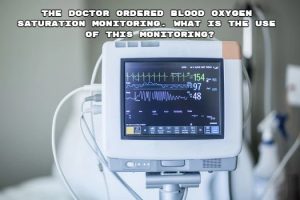The doctor ordered blood oxygen saturation monitoring. What is the use of this monitoring?
- by egokk
- November 24, 2021
With relatives, friends, and hospitalizations, especially after we have spo2 monitor surgery and even before surgery, doctors always work to monitor blood oxygen saturation. So, what is the use of this environmental monitoring?
Blood oxygen saturation (SPO2) is the percentage of the volume of oxygenated hemoglobin HbQ2 that is bound by oxygen in the blood system to the total volume of hemoglobin Hb that can be bound, that is, the concentration of blood oxygen in the blood.
Its most important value is to monitor whether there is hypoxia in the system!
It can not only reflect the hypoxia of the fingertips, but also reflect whether the arterial blood is absolutely hypoxia. The formula is as follows:
The arterial blood oxygen content is 1.34 × hb × spo2 + 0.003 × pao2.
Finger pulse waves are also a good developmental indicator that reflects the excitability of sympathetic nerves. For example, during tracheal intubation and skin incision, the amplitude of the finger pulse wave decreases rapidly, indicating that there is some vasoconstriction. With the end of the economic stimulus, Waveform technology gradually began to recover. It helps us to judge the depth of anesthesia, and can get a good guide to the depth of intraoperative anesthesia management and control.
Finger pulse waves can reflect myocardial contractility, and the inclination of its ascending branch indicates a decrease in contractility. It should be noted that this response is relative, and the peripheral resistance at this time needs to be considered comprehensively. If the peripheral resistance decreases when the ascending branch is inclined, the myocardial contractility may not decrease.
Finger pulse waves can reflect blood volume. For example, the finger pulse waveform fluctuates with the development of the respiratory cycle during the scanning process, indicating that there is an obvious blood volume shortage, which is of great research value for the judgment of shock patients and patient capacity after extracorporeal circulation. What we need to pay attention to is that this kind of economic fluctuation is limited to the time change of the waveform size. For example, frequent use of the shape and structure of the waveform requires an active search for the heart cause.
Finger pulse waveform helps to judge arrhythmia. The difference between the heart rate displayed by the finger pulse wave and the heart rate displayed by the ECG indicates ventricular fibrillation.
Finally, please pay attention to the analysis of the concept of SPO2, which emphasizes the percentage. When reading blood oxygen saturation values in any situation, there must be a basic concept of percentage in brain activity, which will have a decisive influence on your diagnosis.
In short, this number must be based on the amount of hemoglobin in the blood. If the total hemoglobin is large, if the denominator of the total hemoglobin is large, there will be no hypoxia, even if the molecule is small enough to produce low oxygen content. This situation is seen in people in plateau areas, smokers, long-distance runners, patients with chronic lung disease, patients with arteriovenous bypass heart disease, and patients with blood diseases. What these groups have in common is that their bodies are hypoxic for a long time, whether it is relative or absolute, their active hemoglobin levels increase to improve their ability to carry oxygen. It is worth noting that the blood of these patients is relatively viscous, and further hypoxia may cause the primary disease to directly enter the decompensated state; another situation that requires special attention is that the total amount of hemoglobin is very small. In this case, although oxygenation can reach 100%, the amount of hemoglobin is too small, and even all hemoglobin bound to oxygen is not enough to carry oxygen.
Secondly, blood oxygen saturation cannot immediately reflect the interruption of exogenous oxygen. Once upper respiratory tract obstruction or suffocation does not occur, if our oxygen partial pressure at this time is very high (greater than 100), blood oxygen saturation cannot directly reflect the decline in the patient's oxygen partial pressure. It is possible to view the oxygen ionization curve).
Recommended related articles
Future mothers should pay attention! Hypoxemia is not terrible
